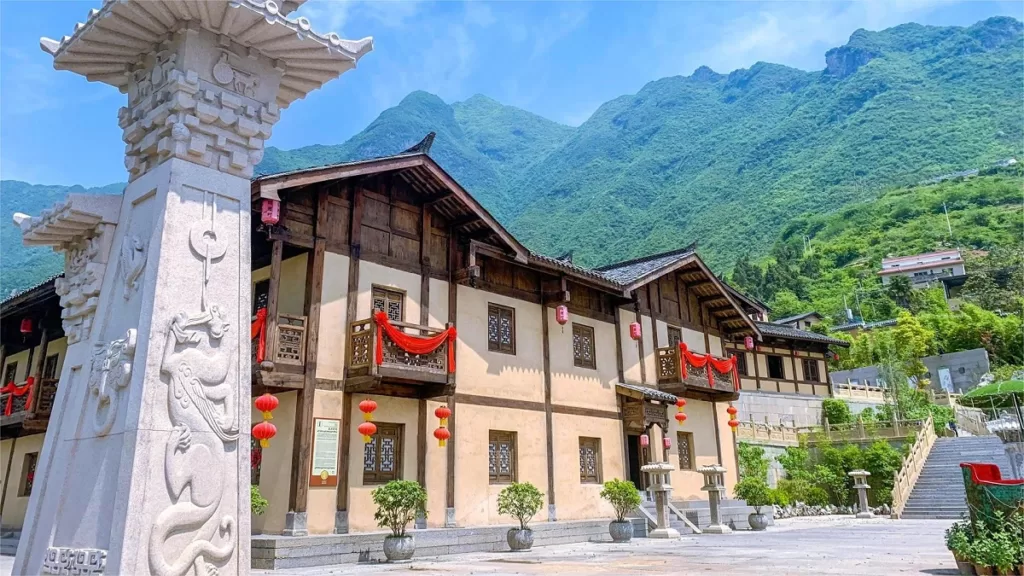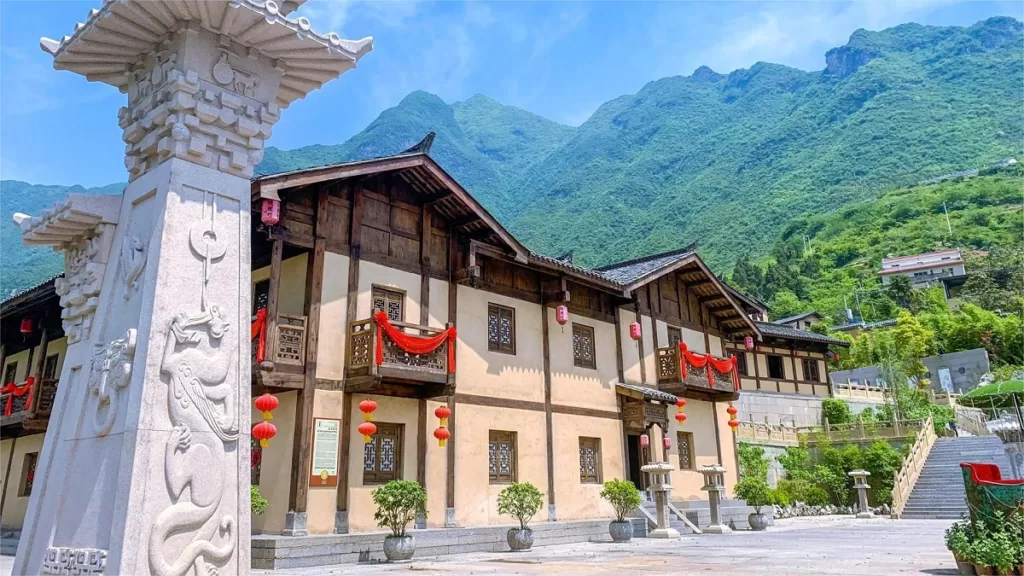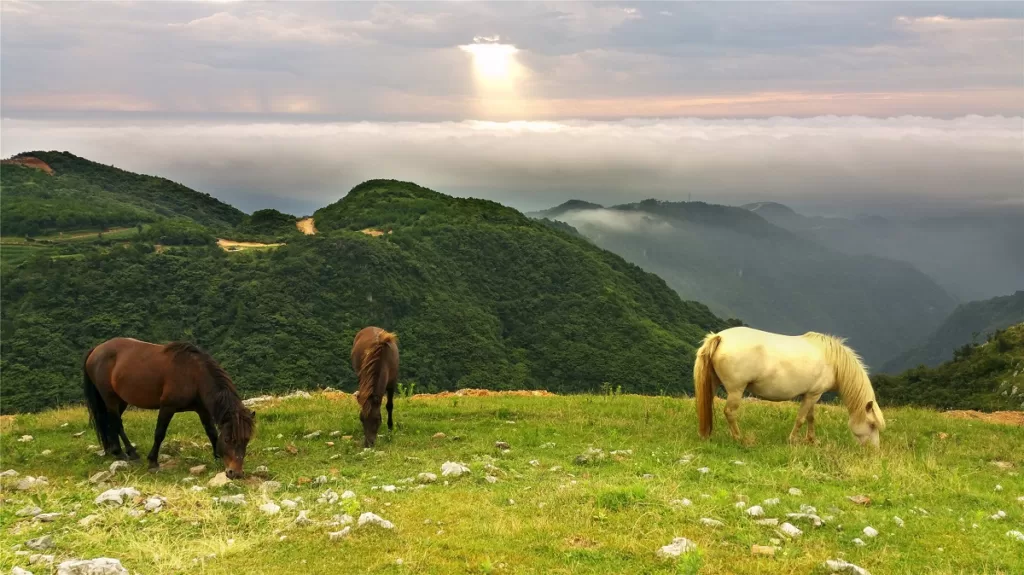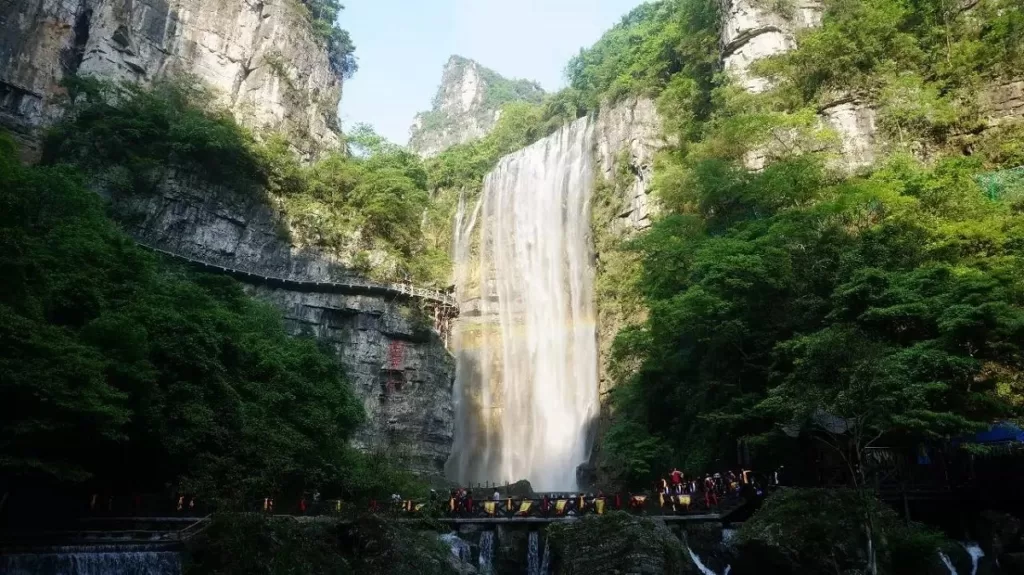Zhaojun Village, Yichang - Billets, heures d'ouverture, emplacement et points forts


Zhaojun Village (昭君村), originally known as Baoping Village, was renamed in honor of Wang Zhaojun, who was born here in the lunar month of August in 54 BC. This historic village is adorned with over 20 scenic spots including the Rouge Woods, Beautiful Lady Island, Washing Silk Spot, and the Goddess Spring. The landscape is mesmerizing, enveloped in mist around the Wang Family Cliff, while the Xiangxi River winds its way in nine bends, and the elegant and ancient Goddess Spring never runs dry. The village boasts attractions like the Dressing Table Garden, where flowers create a canopy, the statue of Wang Zhaojun stands gracefully, and the melodious tunes resonate from the Qin (a Chinese musical instrument) Platform.
Table des matières
- Informations de base
- Localisation et transport
- Who is Wang Zhaojun
- Highlights of Zhaojun Village
- Autres attractions dans la banlieue de Yichang
Informations de base
| Durée estimée de la visite | 2 - 3 heures |
| Prix du billet | 60 RMB |
| Heures d'ouverture | 8.00 - 17.30 |
| Numéro de téléphone | 0086-0717-2910088 |
Localisation et transport
Zhaojun Village, located in the southern outskirts of Xingshan County, Yichang CityProvince de Hubei, spans an area of 3.5 square kilometers.
To reach Zhaojun Village, start by taking a high-speed train to Yichang. Upon arrival at Yichang East Railway Station, head to the opposite side of the station and board a direct bus to Xingshan. Once in Xingshan County, alight at Zhaojun Village.
Who is Wang Zhaojun
Wang Zhaojun, also known as Wang Qiang or Mingfei (Bright Concubine), was selected into the palace during the Han Dynasty’s Emperor Yuan’s reign. In the first year of Jingning (33 BC), she volunteered to marry the Southern Xiongnu Chanyu (ruler), contributing to fostering friendly relations between different ethnic groups. After entering the Xiongnu, she was titled Ninghu Ejen (Empress).
Highlights of Zhaojun Village
Xiangxi River
The Xiangxi River originates from Shennongjia, where the mythical figure Shennong, the Divine Farmer, gathered medicinal herbs. It winds like a jade ribbon through Zhaojun Village, passing through the hometown of Qu Yuan, and eventually joining the Yangtze River, stretching 97.3 kilometers and colloquially known as the Hundred Li Fragrant Stream.
Wang Family Old House
The Wang Family Old House holds historical significance. Legend has it that during Emperor Xuan of Han’s reign (57 BC), Wang Zhaojun’s grandfather established a wooden house in Baoping (now Zhaojun Village). By the time of Emperor Yuan, due to Zhaojun’s contributions in fostering peace by marrying into the Xiongnu, her father Wang Rang was granted the position of Governor of Yuezhou. Subsequently, Wang Rang chose an auspicious feng shui location to build a new residence, gifting the old house to his descendants, hence known as the Wang Family Old House. In the Ming Dynasty’s Xuande period (1426), Wang Zhu, a descendant of the Wang family who had served as a judge in Jinan Prefecture, rebuilt the Wang Family Old House on its original site.
Goddess Spring
The Goddess Spring is believed to be where Wang Zhaojun fetched water during her childhood. The spring gushes from the rocks, offering cool and sweet water that never dries up throughout the year. Legend has it that Wang Zhaojun became exceptionally beautiful because of drinking this spring’s water.
Autres attractions dans la banlieue de Yichang

Zone panoramique de la prairie de Bailihuang

Parc forestier national de Dalaoling

Three Gorges Waterfall

Zone panoramique de Chexi Folk Custom

Temple Guanling, Dangyang
Sites historiques du Hubei, Attractions de Yichang